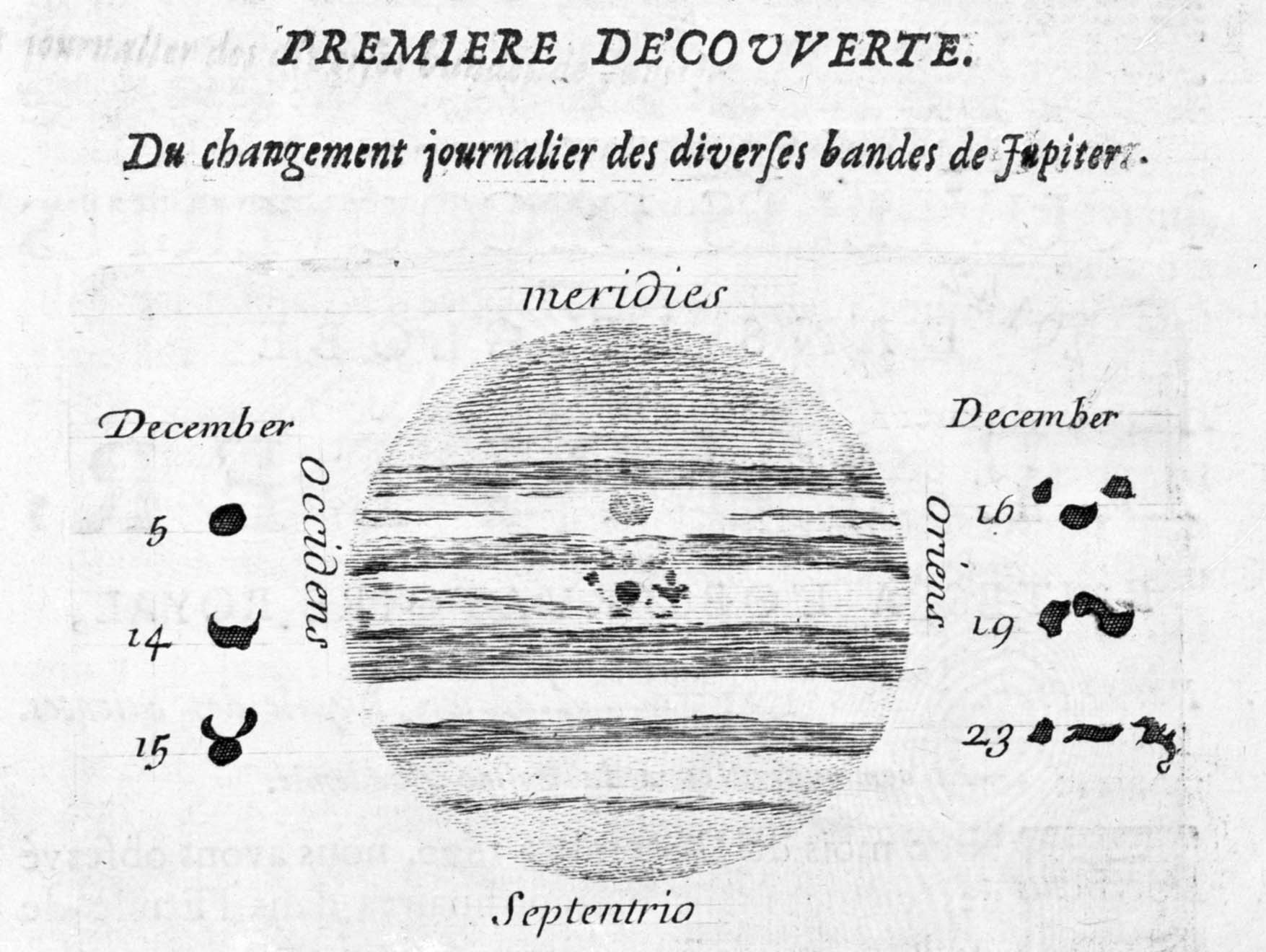Celestial mechanics quickly worked out its history: The object had passed very close to Jupiter and was fragmented as a result of the tidal forces from the planet. The fragments were then in orbit around the planet and were predicted to hit Jupiter in July 2014.
The deadlines were too short to launch a space mission dedicated to the event, but existing resources were to be used: the Hubble Space Telescope and the Galileo spacecraft en route to Jupiter. Many telescopes and radio telescopes were mobilized to observe the falls.
The impacts were occurring behind the disc of Jupiter and were not directly observable from the Earth. However, their sites became visible within minutes, thanks to the rapid rotation of the planet. The Hubble provided a series of beautiful images of the sequence. The Galileo probe was even better positioned, and its instruments recorded the entire phenomenon.

Mosaïque d’images de Jupiter prises par le télescope spatial Hubble, montrant l’évolution de deux sites d’impact (taches sombres) des fragments de la Comète SL9. Sur la première image, en bas à droite, on distingue une éjection hors du limbe 5 minutes après l’impact (petit point lumineux en bas, hors du disque). Les images au-dessus sont prises successivement 1,5 heure après l’impact, puis 3 jours après et enfin 5 jours après. Sur les deux dernières, on observe la trace d’un autre impact.
Crédit : JPL/NASA/STScIThe fall of the fragments at 60 kilometers (38 miles) per second first produced in Jupiter’s atmosphere a fireball with temperatures exceeding 20,000 degrees, then decreasing quickly. Some material was ejected and then fell 10 minutes later, causing a further increase in temperature. A big black spot, about 6,000 km in diameter, appeared in the location of each impact. One could observe the spectral signature of molecules not yet detected in Jupiter’s atmosphere: water, observed by Galileo in the near infrared; CO, HCN, CS and OCS, whose emission was detected by millimeter radio telescopes; finally S2, CS2 and H2S, observed by the Hubble space telescope in the ultraviolet. Some were produced by chemical reactions caused by the temperature increase. Others, such as water, were brought by the comet.
Such an event is certainly uncommon, but not unique; models of collisions with comets and asteroids predict that the fall on Jupiter of an object a kilometer in diameter, as was the comet SL9, occurs on average every 500 to 1,000 years.

La trajectoire de la comète SL9 autour de Jupiter entre juillet 1992 et juillet 1994. La comète est « capturée » par Jupiter. Elle se fragmente à cause des forces de marée et les morceaux, qui ont des trajectoires légèrement différentes les unes des autres, vont percuter tour à tour la planète deux ans plus tard.
Source : James LequeuxMoreover, a phenomenon of this kind was most likely observed by Cassini in December 1690. In the case of Earth, these falls are fortunately much more rare and occur on average every million years. However, it is likely that the oceanic water was brought to Earth by the fall of comets and asteroids, which was much more frequent during the billion years that followed the formation of the Solar system.

Tiré des Nouvelles découvertes dans le globe de Jupiter faites à l'Observatoire de Paris par Monsieur Cassini, [1690]
Crédit : Observatoire de Paris